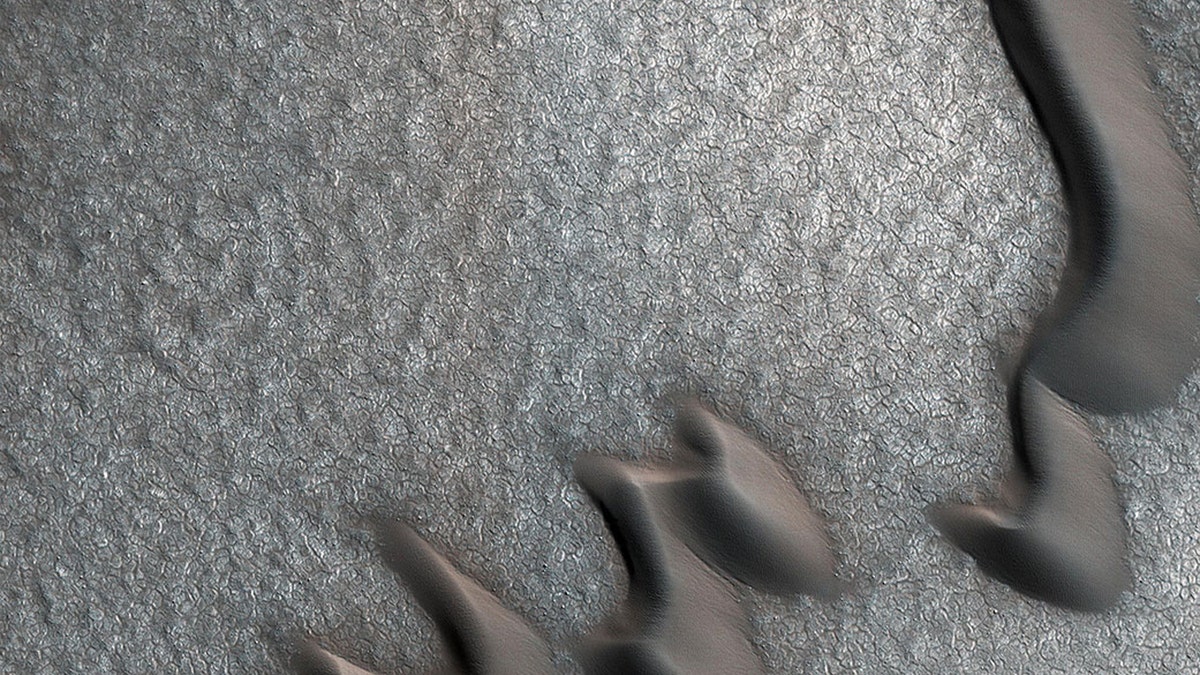
(Credit: NASA/JPL-Caltech/Univ. of Arizona)
NASA's Mars Reconnaissance Orbiter (MRO) is taking pictures of the Red Planet and a newly released photo has revealed bizarre piles of rock.
The photo, released by NASA and taken on Jan. 27, shows boulders set at regular intervals within the stripes of light, on top of the flat ground below. NASA has theorized that it may be a sign of the phenomenon known as "frost heave," but did not specifically say that is what is causing the occurrence.
"With frost heave, repeatedly freezing and thawing of the ground can bring rocks to the surface and organize them into piles, stripes, or even circles," NASA officials wrote in a description of the photo. "On Earth, one of these temperature cycles takes a year, but on Mars it might be connected to changes in the planet's orbit around the Sun that take much longer."
BUGS FOUND IN THE DRIEST SPOT ON EARTH COULD INDICATE LIFE ON MARS
The photo was taken by the High Resolution Imaging Science Experiment camera aboard the MRO and was originally meant to "track the movement of sand dunes near the North Pole of Mars," NASA officials added.
The MRO cost $720 million, of which approximately $450 million was for the spacecraft development and science instruments. It was designed to "examine Martian features ranging from the top of the atmosphere to underground layering," according to a 2005 release from the government agency.
It's also being used to study the "history and distribution of Martian water" and "support future Mars missions by characterizing landing sites and providing a high-data-rate communications relay."
Follow Chris Ciaccia on Twitter @Chris_Ciaccia




















